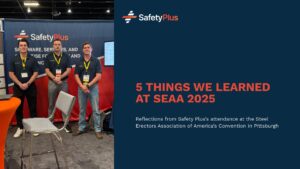Consequences of a High EMR
Experience Modification Rating (EMR) is a term used in the construction industry to measure the safety performance of a company. The EMR is calculated by comparing the company’s actual workers’ compensation claims experience to the expected claims experience for similar companies in the same industry. A high EMR means that a company has higher than expected workers’ compensation claims, which can lead to increased insurance premiums and decreased competitiveness in the marketplace. Reducing the EMR is crucial for companies in the construction industry to remain competitive and profitable.
The consequences of a high EMR can be significant. Insurance companies use the EMR to determine a company’s insurance premium, with a high EMR resulting in higher premiums. This can put a strain on a company’s finances and make it difficult to compete with other companies in the industry. In addition, a high EMR can also result in a loss of business opportunities, as some clients may not want to work with a company with a poor safety record. A high EMR can also damage a company’s reputation in the marketplace, making it difficult to attract new clients and retain existing ones.
Here are some steps that companies can take to reduce their EMR:
- Create a culture of safety: One of the most effective ways to reduce the EMR is by creating a culture of safety within the company. This involves establishing safety policies and procedures, providing regular safety training to employees, and encouraging employees to report safety concerns or hazards.
- Implement a safety management system: A safety management system is a comprehensive approach to managing safety within a company. It includes policies, procedures, and processes to identify, evaluate, and control workplace hazards. Implementing a safety management system can help companies to identify and address safety issues before they become a problem.
- Conduct regular safety inspections: Regular safety inspections can help companies to identify potential hazards and address them before they cause an injury or illness. Inspections should be documented to track progress and identify areas for improvement.
- Provide personal protective equipment (PPE): PPE can help to protect employees from workplace hazards and reduce the risk of injury or illness. Companies should provide appropriate PPE for their employees and ensure that it is used correctly and consistently.
- Conduct regular safety meetings: Regular safety meetings can help to keep employees engaged and informed about safety issues. These meetings should be interactive and provide opportunities for employees to ask questions and provide feedback.
By taking these steps, companies can reduce their EMR and improve their safety record. In addition to the financial benefits of lower insurance premiums, a lower EMR can also lead to improved employee morale and retention, increased productivity, and a better reputation in the marketplace.
Ultimately, reducing the EMR is a win-win for companies and their employees, as it promotes a safer and more productive workplace for everyone. For professional advice on how to implement any of the above steps or for tools that will help improve your safety program and lower your EMR, request a consult with a Safety Plus safety expert at any time.
Recommended Reading
National Safety Month: Reducing Preventable Injuries and Deaths
Every June, National Safety Month reminds us that many injuries and deaths are preventable, whether at work, at home, or on the road. While safety should be a priority throughout the year, this annual initiative gives everyone a chance to slow down, evaluate risks, and take steps to mitigate them. Job site injuries, car accidents,…
The Hidden Costs of Workplace Incidents (and How to Avoid Them)
Workplace incidents can be costly on multiple fronts, from direct costs like medical and legal fees to indirect costs like lost productivity and reputational damage. The ripple effect of a workplace injury or death can last far beyond the incident itself, eating away at profitability and damaging a company’s reputation. However, the right safety measures…
Partner Spotlight: MASC Safety Consulting – Machine Safety & Compliance Expertise for High-Hazard Operations
At Safety Plus, we recognize the critical importance of machine safety and regulatory compliance in industrial operations. To support our clients in achieving these objectives, we are proud to spotlight MASC Safety Consulting, a firm that provides comprehensive safety services tailored to industrial operations. Featured Resource: Comprehensive Machine Safety Services Available Through Our Partner Network…
5 Things We Learned at SEAA 2025
Reflections about trends in the steel erection industry from Safety Plus’s attendance at the Steel Erectors Association of America’s Convention and Trade Show in Pittsburgh The 2025 SEAA Convention & Trade Show in the Steel City of Pittsburgh was nothing short of inspiring! Safety Plus was humbled to sponsor and exhibit at this event for the…
SAFETY MANAGEMENT SIMPLIFIED
Prevent Tragedy and Scale Effectively by Making Safe Work Efficient




